Japanese maple: location, pruning & varieties of Acer palmatum
Depending on the variety, the Japanese maple can stand out both in your garden and in a container on the balcony or terrace. The autumn colour as well as its picturesque growth habit make it a real eye-catcher.

The use of Japanese maple (Acer palmatum) in European gardens began as early as the end of the 18th century. However, in its homeland it was known much earlier as a horticultural crop and in several cultivated forms. But where does it originally come from? In addition to this question, we clarify what kind of location Japanese maple needs, what varieties are available and give you all the information you need to properly care for them.
Contents
Japanese maple: origin and characteristics
The name ‘Japanese maple’ is already an indication of the tree’s original home. Today, Japanese maple is common not only in Japan but also in Korea and other countries in East Asia, and is found in cool and moist forests. In Japan, the Japanese maple was discovered several centuries ago as an ornamental plant and is still one of the most popular trees for bonsai culture.

But what makes the Japanese maple so special? The delicate leaves and its beautiful autumn colour are naturally striking, as well as the great variety of colours and leaf shapes of the different varieties. The specie’s name refers to the appearance of the palmately lobed fanned maple leaves of the original form and comes from the Latin word palma, meaning “palm”. When it comes to the age of native maple trees such as the Norway maple (Acer platanoides) – up to 200 years – or the sycamore maple (Acer pseudoplatanus) – up to 500 years – the Acer palmatum at just 100 years lags somewhat behind; nevertheless, this is not a bad age for an ornamental tree.
How big does a Japanese maple grow? Depending on the variety and location, a Japanese maple can grow to a maximum height of 4 to 7 m in our country, which is mainly due to our climate. It grows about 20-40 cm per year. There are also some varieties that are small in size and reach only 2-3 m in height. It is crucial to note that Japanese maple can become as wide as it is tall and even wider as it ages.

The most beautiful varieties of Acer palmatum
The simple Japanese maple has long ceased to stand alone. Since it has been used as a horticultural crop for so many years, there are now hundreds of different varieties, all of which trace back to Acer palmatum. We would like to introduce some beautiful varieties of Japanese maple here:
- Red-leaved Japanese maple (Acer palmatum ˈAtropurpureumˈ): vigorous; 3 – 5 m tall; dark red colouration of fresh leaves; foliage turns slightly green in summer, turning a dark, orange red in autumn.

- Red Japanese maple (Acer palmatum ˈBloodgoodˈ): vigorous; 4 – 6 m tall; deciduous, leaves turning to dark red to black, red in autumn.
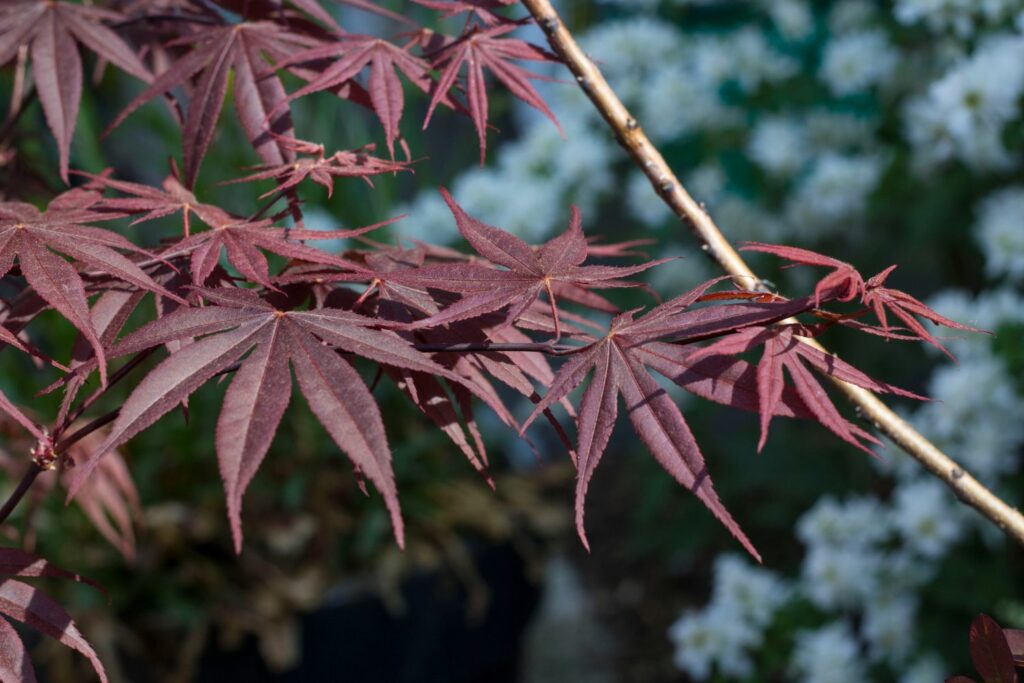
- Green cutleaf maple (Acer palmatum ˈDissectumˈ): low growing; up to 2 m tall; very fine, slit leaves; autumn colour yellow to orange.
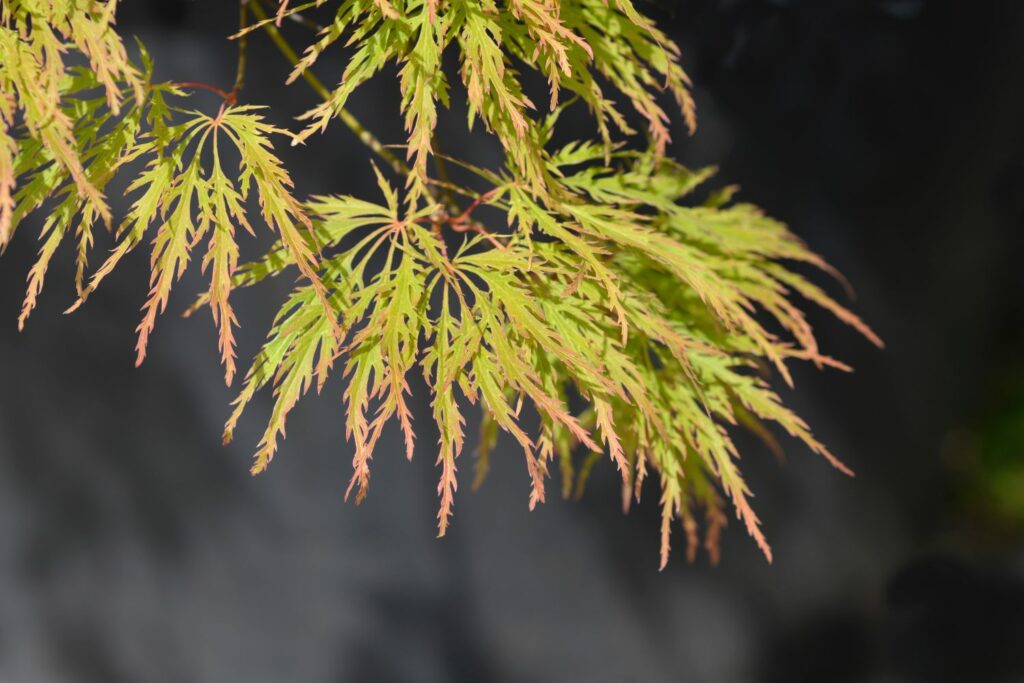
- Dark red cutleaf maple (Acer palmatum ˈDissectum Garnetˈ): low-growing; about 2 m tall; very fine, slit leaves; bright red shoots and dark red to black-red leaves into autumn
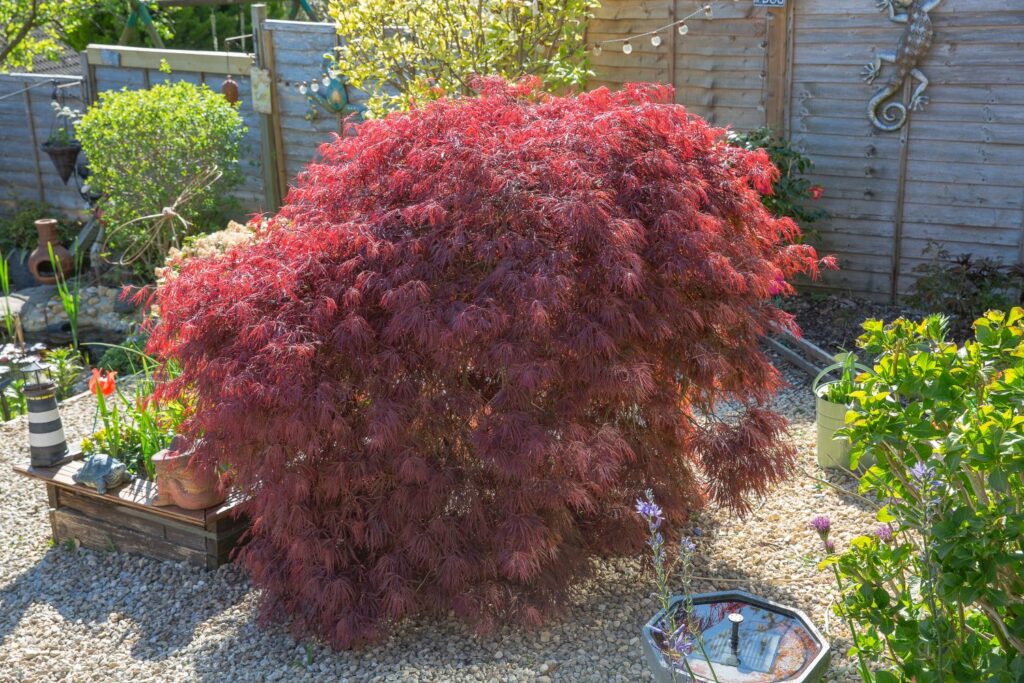
- Orange Japanese maple (Acer palmatum ˈOrange Dreamˈ): low-growing; 3 – 4 m tall; initially golden orange leaves, later somewhat greener; yellow autumn colour.

- Japanese maple ˈOsakazukiˈ (Acer palmatum ˈOsakazukiˈ): rapid-growing; 4 – 6 m tall; fresh leaves green; dark orange to crimson autumn colour
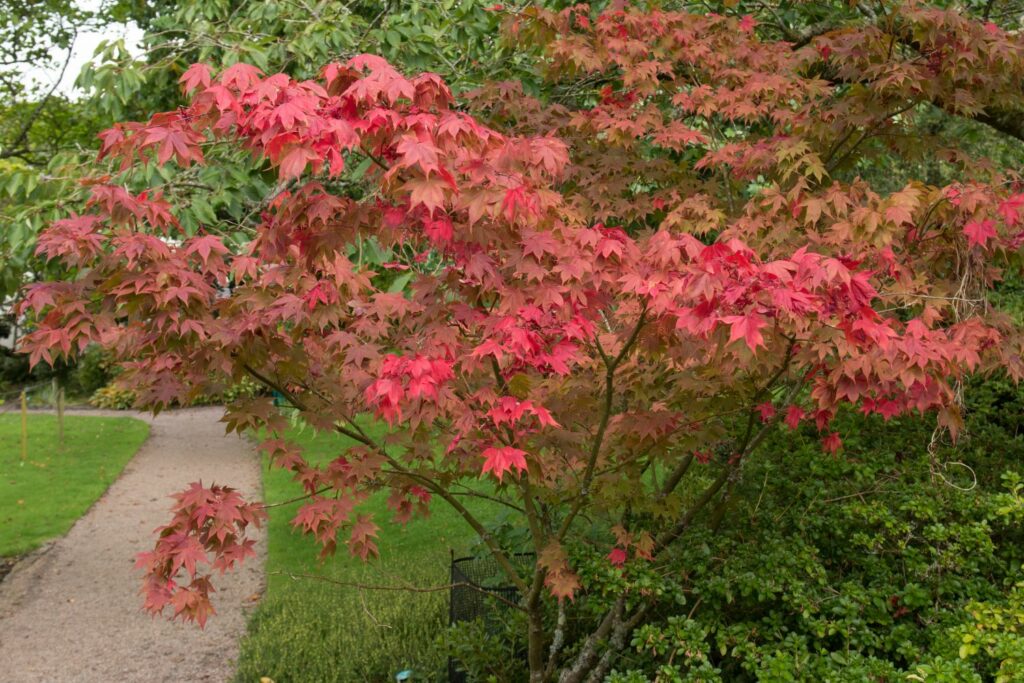
Planting Japanese maple: location and method
Once you have decided on a variety, be sure to ask the seller about its specifics. In any case, Japanese maples generally prefer a sunny location. They also develop well in partial shade, though a sunny spot will result in a more beautiful autumn colour. Also, make sure that the site is protected from the wind.
Tip: red-leaf and cutleaf varieties are more susceptible to sunburn so a semi-shaded location is the best choice here.
The soil should ideally be loose and rich in humus, waterlogging must be avoided as much as possible. As far as the pH of the substrate is concerned, the Japanese maple is relatively undemanding but prefers slightly acidic soils. If the soil is very light and sandy, we recommend placing your Japanese maple in slightly more shade as the tree will suffer from strong sunlight if it lacks water. It is also useful to mix a good compost, such as our Plantura Organic All Purpose Compost, into the soil. Our peat-free and environmentally friendly soil helps loosen heavy soils but improves the water-retaining capacity of sandy soils and naturally contains macro and micro-nutrients to nourish the Japanese maple.
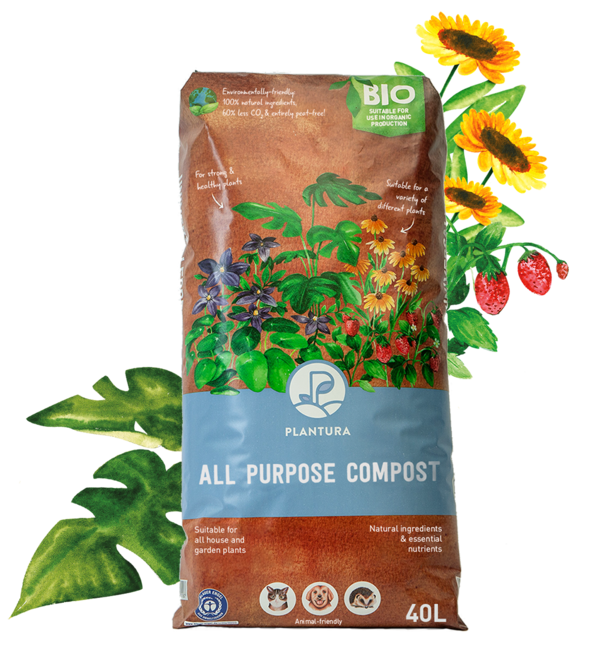
- Perfect for all your house, garden & balcony plants
- For strong & healthy plants as well as an active soil life
- Peat-free & organic soil: CO2-saving composition
Japanese maple in the garden
In the garden, the Japanese maple is best planted in a solitary position appropriate to its location. This is where its picturesque growth habit comes into its own. Ensure enough space around the tree as most varieties can grow at least as wide as they are tall as they age. The Japanese maple is susceptible to frost when young. It is therefore best to plant in the spring after the last late frost so that it can establish itself throughout the year. When planting Japanese maple, make sure that you do not plant the root ball too deep, leaving about 2 cm sticking out. If you have a clay or loamy soil in your garden, it is also worth generously loosening up the area around the planting hole and incorporating plenty of coarser textured material such as bark mulch, gravel and sand. Since maples are shallow-rooted plants, it is a good idea to mulch the root zone thickly after planting to keep it moist and cool.
Japanese maple varieties for the garden:
- Red-leaf Japanese maple ˈAtropurpureumˈ
- Red Japanese maple ˈBloodgoodˈ
- Orange Japanese maple ˈOrange Dreamˈ
- Japanese maple ˈOsakazukiˈ
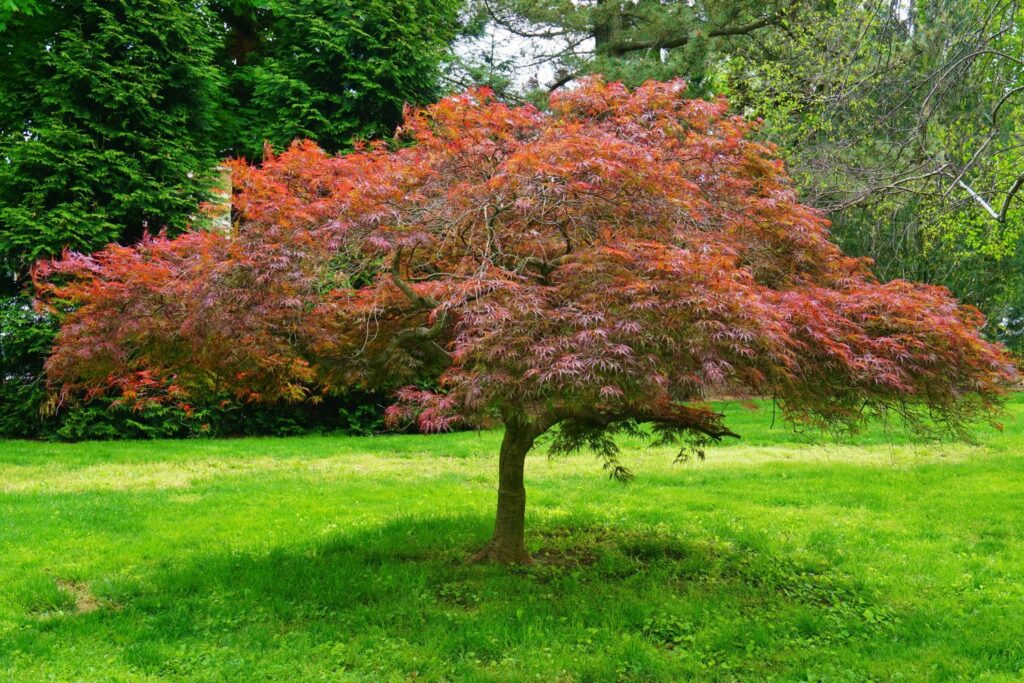
Japanese maple in a container
You will need a different sized pot depending on the size of the purchased tree. However, due to its root growth, the vessel may be slightly wider than it is tall. For planting Japanese maple in a container, a good planting soil such as our Plantura Organic All Purpose Compost is suitable since it is peat-free, has a much higher structural stability and can be better re-wetted with water. To avoid waterlogging, the soil should be mixed with about 30% coarser components, such as expanded clay or gravel. Depending on the variety and growth, the maples should be repotted every 2 to 4 years. In the process, you can also shorten the roots a little, so that plenty of fine root’s sprout in the new planter. Above a certain size of Japanese maple and container, it will only be possible to change the location with the help of heavy equipment.
Japanese maple varieties for pot culture:
- Green cutleaf maple ˈDissectumˈ
- Dark-red cutleaf maple ˈDissectum Garnetˈ
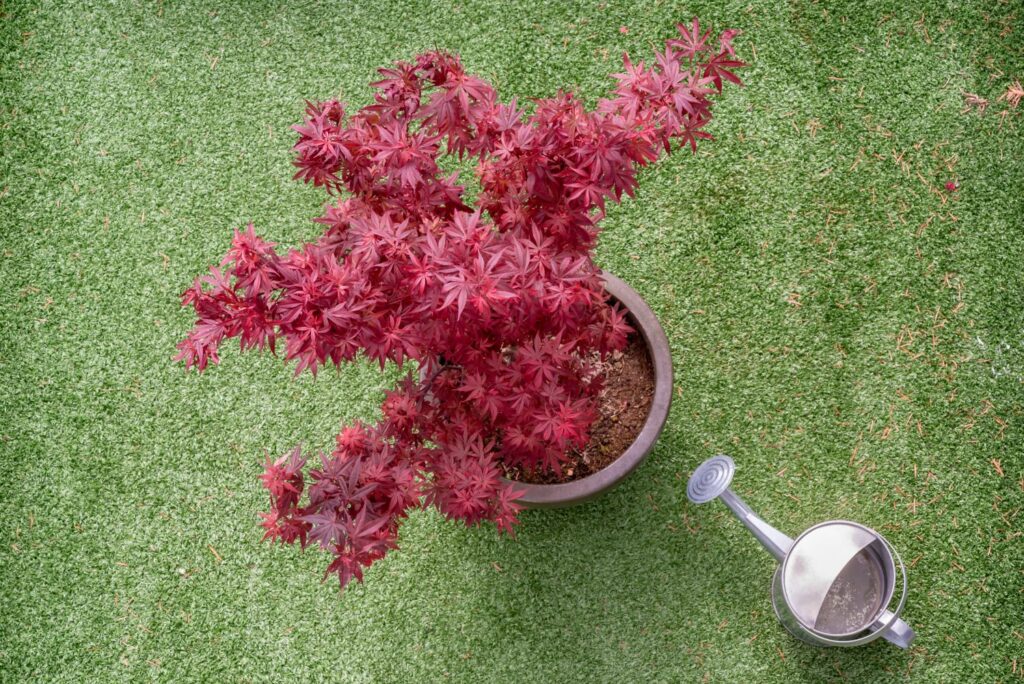
Care
All varieties of Acer palmatum are low maintenance but nevertheless should not be neglected.
Watering and fertilising
Regular watering is important, especially after planting. As with so many plants, waterlogging should be avoided here. If the water is saturated, no oxygen reaches the roots and they will die. Japanese maple should also be watered if the soil is well-drained or during long dry periods in summer.
It is a good idea to work a primarily organic slow-release fertiliser such as our Plantura All Purpose Plant Food into the soil directly at planting. You can generally use this in the spring as well to encourage strong growth with the slightly higher nitrogen content. A good supply of nutrients can help Japanese maples grow, especially when they are young.

- Perfect for a variety of plants in the garden & on the balcony
- Promotes healthy plant growth & an active soil life
- Long-lasting fertiliser that is free from animal products - child & pet friendly
Pruning Japanese maple
Pruning Japanese maples is rarely necessary. However, if you want to remove a branch, do it carefully – maple sprouts poorly from old wood. It also does not have good wound healing ability and is often weakened by wood fungus, so we recommend not pruning Japanese maple at all if possible or pruning only with a few cuts.
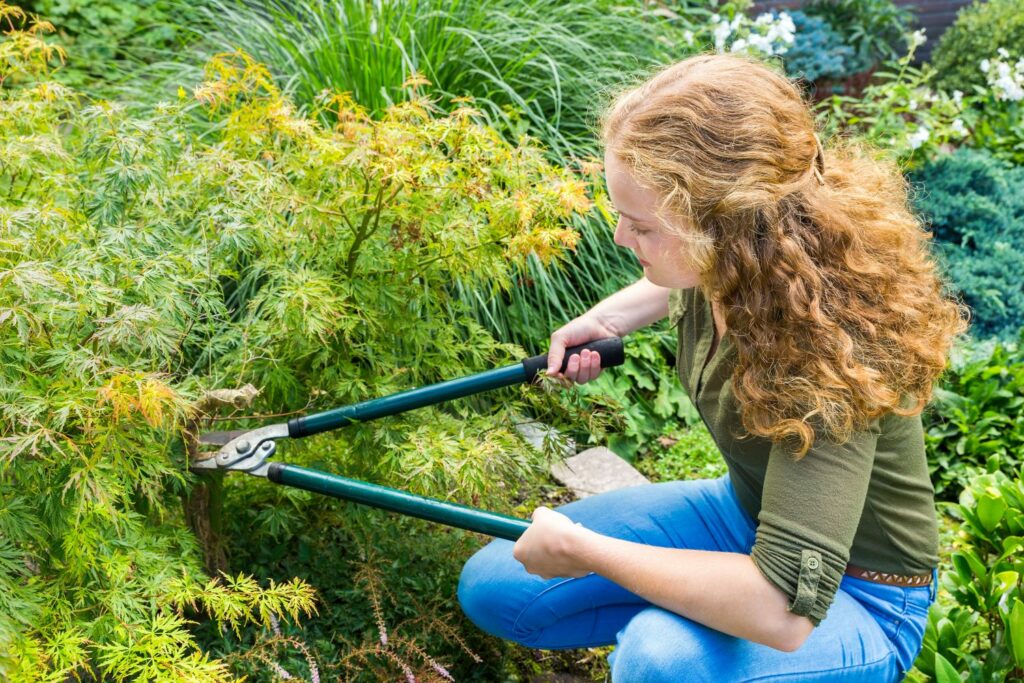
Common diseases and pests
Japanese maple is rarely affected by diseases or pests. A fungal disease that can affect the maple from time to time is powdery mildew. However, this usually causes the tree few problems. Japanese maple suffers worse when infected by maple wilt (Verticillium albo-atrum). There is no remedy for the fungus yet and in most cases, it leads to the death of the plant. Frost damage can occur on young plants or during late frosts in unprotected locations and is indicated by dying tips. In addition, fungal diseases such as maple canker (Eutypella parasitica) are favoured by too frequent pruning or a site that is too wet.
Possible diseases and pests of Japanese maple:
- Gall midges (Contarinia acerplicans and Dasineura vitrina).
- Powdery mildew (Sawadaea genus)
- Fire bacterium (Xylella fastidiosa)
- Horse-chestnut leaf miner (Cameraria ohridella).
- Maple wilt (Verticillium albo-atrum).
- Frost damage to young plants
- Tar spot disease (Rhytisma acerinum).
- Maple canker (Eutypella parasitica)
Is Japanese maple hardy?
In our country, Japanese maple is considered hardy with the trees withstanding temperatures from -10 to -30 °C, depending on the variety and age. The ˈOrange Dreamˈ variety is particularly noteworthy as it tolerates temperatures down to -20 ° C. Young plants are still somewhat more sensitive to frost, so they should be planted only after the late frosts in spring. For potted plants, the pot can also be covered with some fleece and the plant placed in a sheltered spot against a house wall.
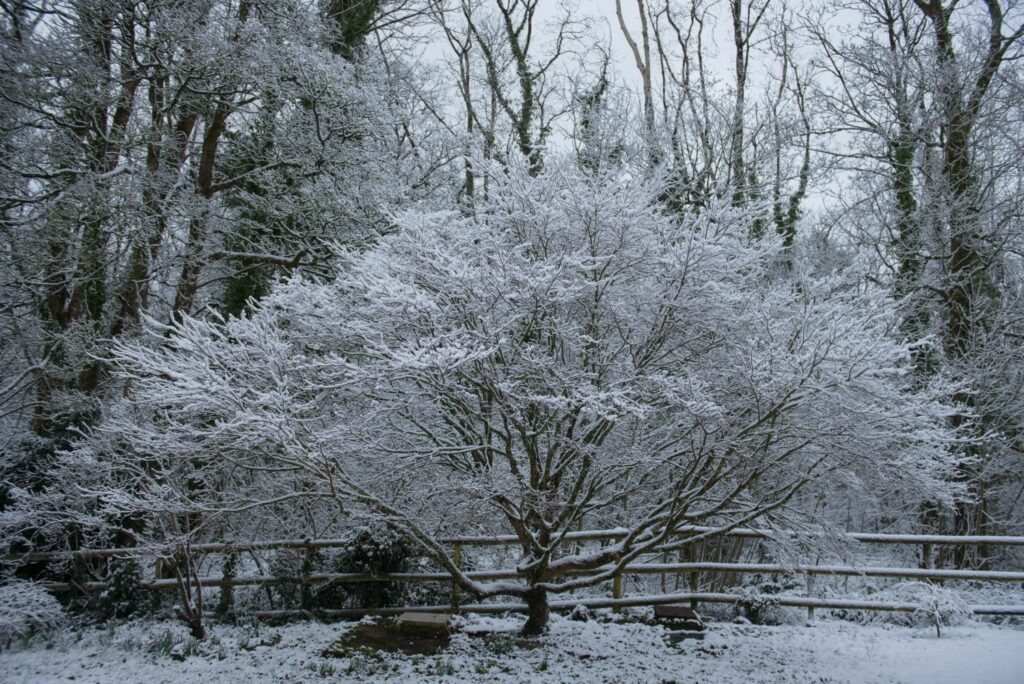
Propagating Japanese maple
For the amateur gardener, propagating different varieties is not worthwhile in most cases. It requires experience, time and equipment as the varieties are usually propagated by grafting. The ˈAtropurpureumˈ cultivar is one of a few that can be easily propagated as a cutting, and shoots are also a possibility.
The wild form, i.e. Acer palmatum, on the other hand, can be propagated somewhat more easily by sowing. To do this, you can store ripe Japanese maple seeds over the winter in a cool, dry place and sow them in March. To increase germination success, the seed can be stratified, i.e. cold treated, before sowing to overcome the natural dormancy of the seeds. It is best to follow these instructions:
- After harvesting in autumn: store at 20 °C and moderate humidity, for example in the home
- After 6 months, store in moist sand at 3 – 5 °C, for example in the refrigerator.
- Subsequent germination at 10 to 15 °C in a moist growing medium
In nature, seed dormancy serves to prevent germination from occurring before the onset of winter. The cold treatment simulates winter, so to speak, and then the seed is hormonally adjusted to germination.
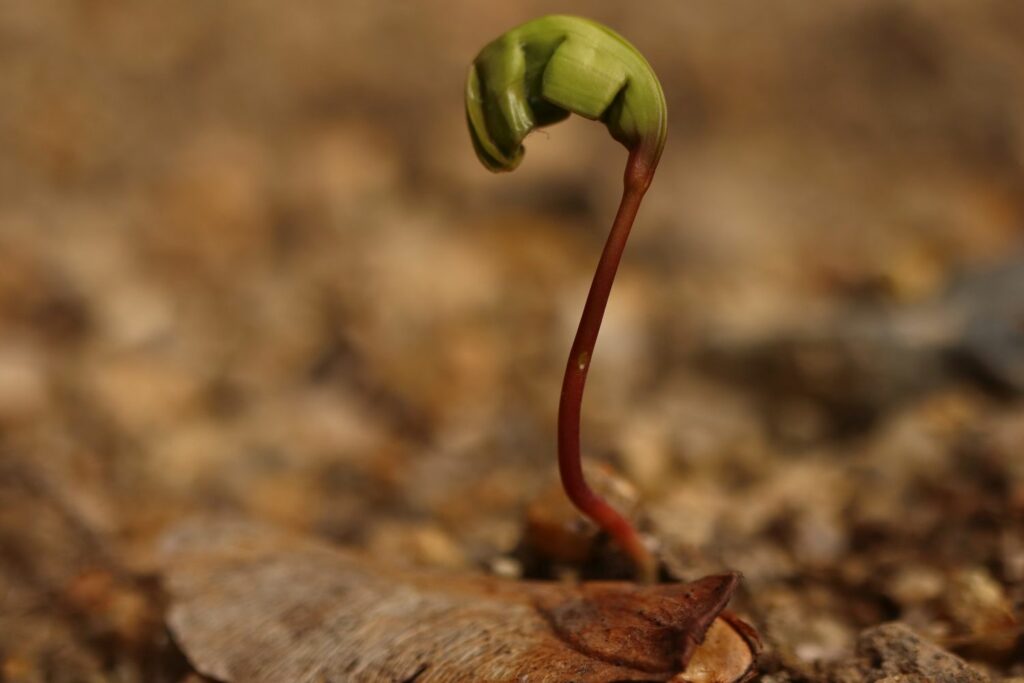
Is Japanese maple poisonous?
Japanese maple, like all maples, is not poisonous. In Japan, young leaves and shoots are even used and eaten as a vegetable.
Also, from Japan and red in colour, but much better as a dessert: the Japanese grape.



















